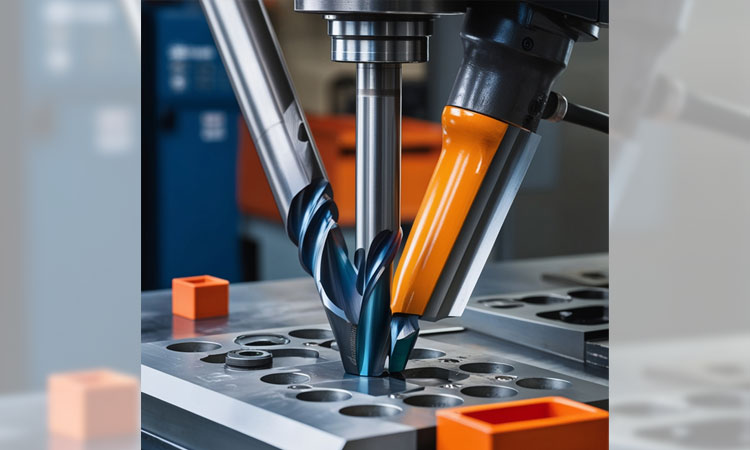The cutting tools industry, a cornerstone of manufacturing, has experienced remarkable transformations over the past decade, driven by technological advancements in materials, coatings, and geometries. This evolution is shaping industries like automotive, aerospace, and medical machining, enabling manufacturers to achieve unprecedented levels of precision, efficiency, and sustainability.
The Market at a Glance
The global cutting tools market is projected to reach USD 35 billion by 2027, growing at a CAGR of 4.6% from 2023-24. With machining accuracy demands intensifying, nearly 65% of manufacturers now prioritize advanced tooling solutions to stay competitive. Innovations in carbide, ceramics, and Cubic Boron Nitride (CBN) are at the heart of this growth.
Material Advancements: Carbide, Ceramics, and CBN
Carbide tools dominate the market, accounting for over 55% of total sales due to their balance of cost, durability, and versatility. Recent developments in ultra-fine-grain carbide have improved hardness and wear resistance by up to 20%, extending tool life significantly.
Ceramic tools, on the other hand, have gained traction for high-speed machining of hard metals. According to industry reports, ceramic tools enhance productivity by 30-40% in applications involving superalloys like Inconel and titanium.
CBN tools, known for their ability to machine hard materials at low cutting forces, are becoming indispensable for finishing operations. These tools reduce surface roughness by 25%, ensuring superior quality for components in aerospace and automotive sectors.
Coatings: The Unsung Heroes
Advancements in tool coatings have revolutionized the industry, with TiAlN (Titanium Aluminum Nitride) and DLC (Diamond-Like Carbon) leading the charge. Coated tools can now withstand temperatures exceeding 1,000°C, making them ideal for dry machining and high-speed applications. Studies show that TiAlN coatings increase tool life by 50%, while DLC reduces friction by 40%, improving energy efficiency during machining.
Nano-coatings are the latest frontier, offering superior wear resistance and thermal stability. These coatings, developed using atomic-level deposition techniques, enhance cutting performance by as much as 60% compared to conventional coatings.
Game-Changing Geometries
Innovative tool geometries are setting new benchmarks for efficiency. Advanced chipbreaker designs improve chip evacuation, reducing downtime and enhancing tool life. Variable helix geometries have shown to lower vibration by 30%, enabling smoother finishes and better dimensional accuracy.
In addition, modular tooling systems with interchangeable inserts are gaining popularity for their flexibility and cost-efficiency. These systems allow users to adapt tools for diverse operations, minimizing inventory requirements and boosting productivity.
A Sustainable Future
Sustainability is becoming a critical focus in cutting tool innovation. Manufacturers are increasingly adopting recyclable materials and eco-friendly production techniques. The development of tools designed for minimum quantity lubrication (MQL) systems has reduced coolant usage by up to 90%, lowering environmental impact and operational costs.
The cutting tools industry stands at the forefront of manufacturing innovation, with advancements in materials, coatings, and geometries redefining machining possibilities. As global demand for precision and efficiency grows, cutting tools will continue to play a pivotal role in driving industrial progress. With a market poised to exceed USD 35 billion by 2027, the next decade promises even greater breakthroughs, ensuring that cutting tools remain the unsung heroes of modern manufacturing.


